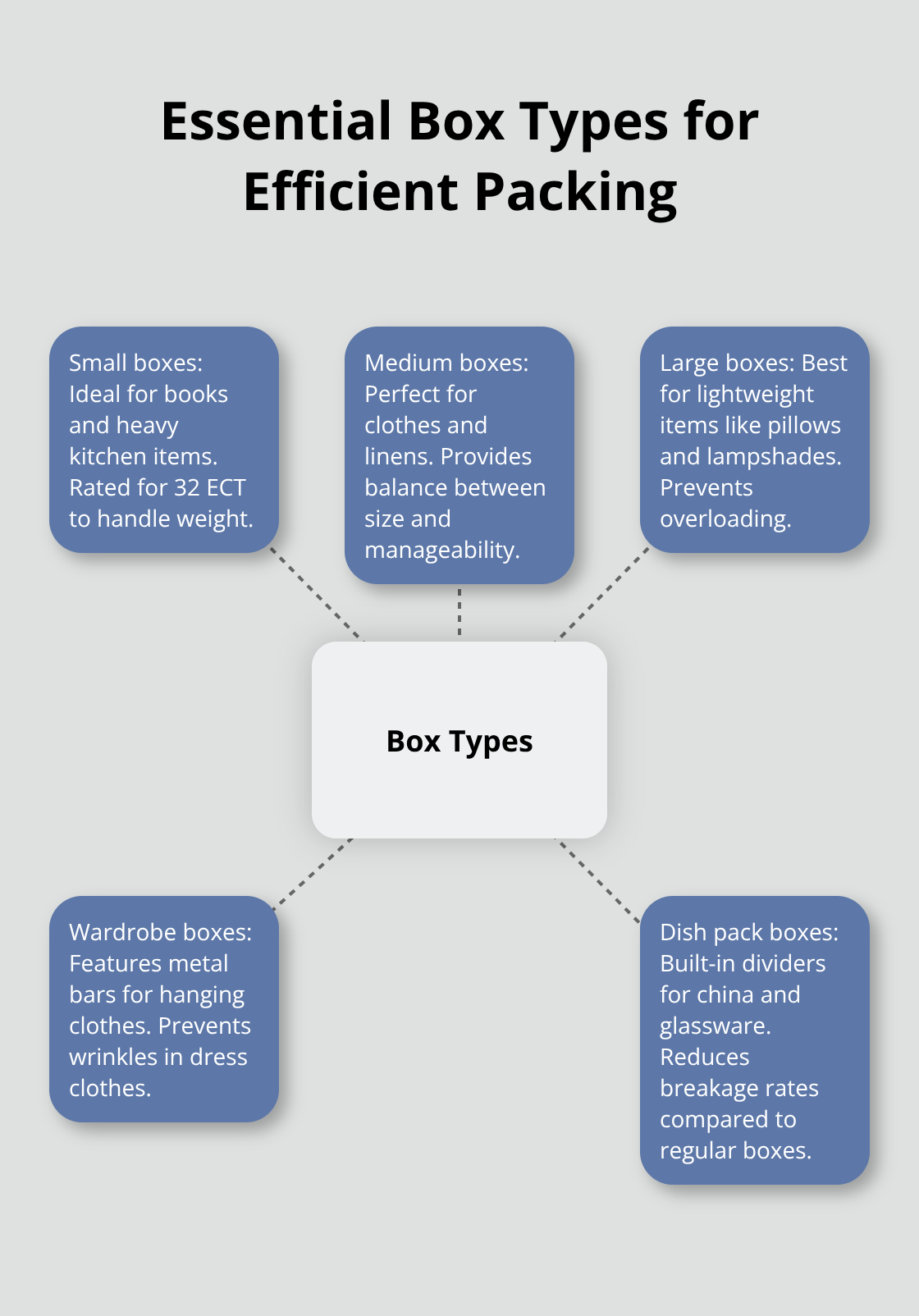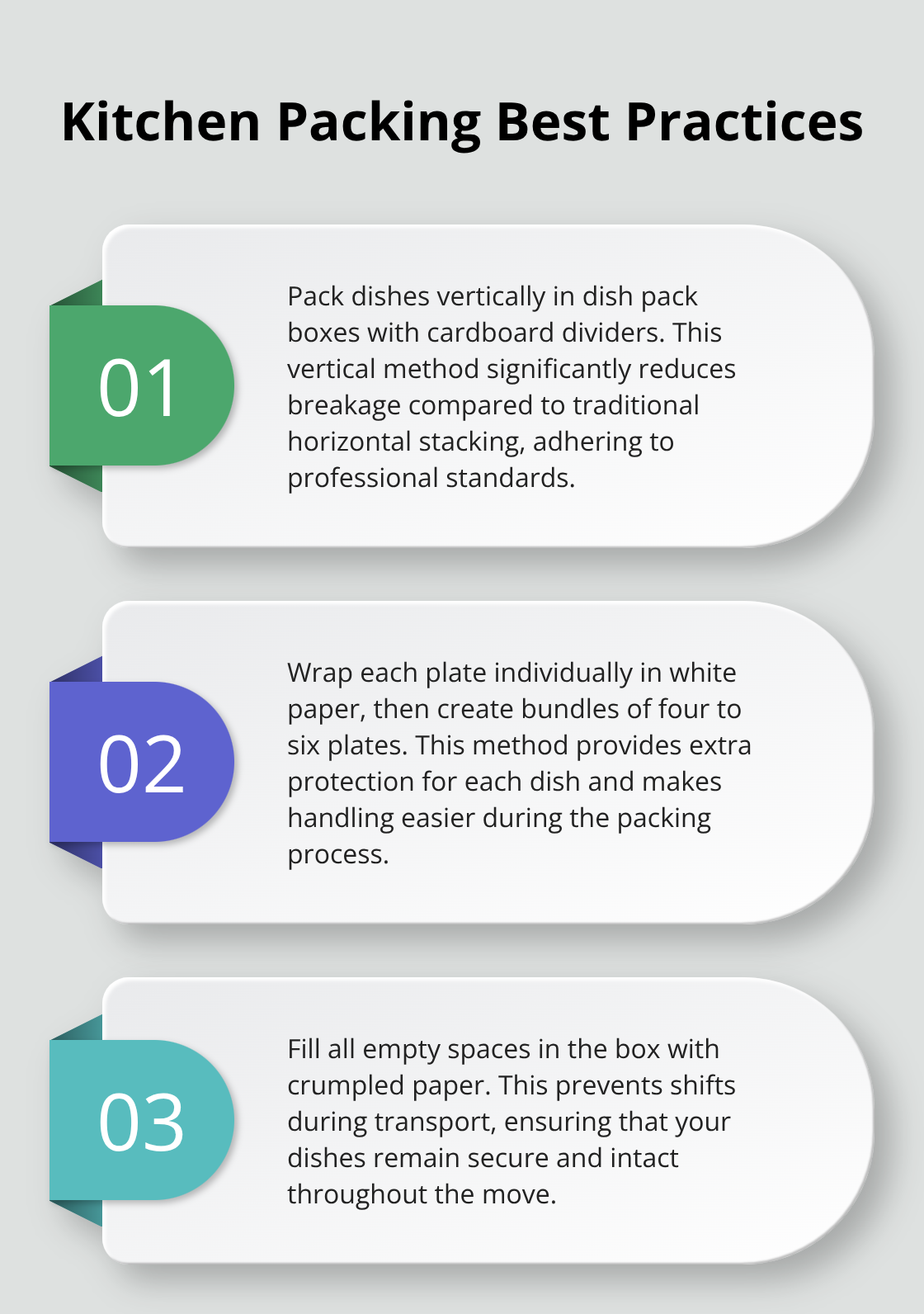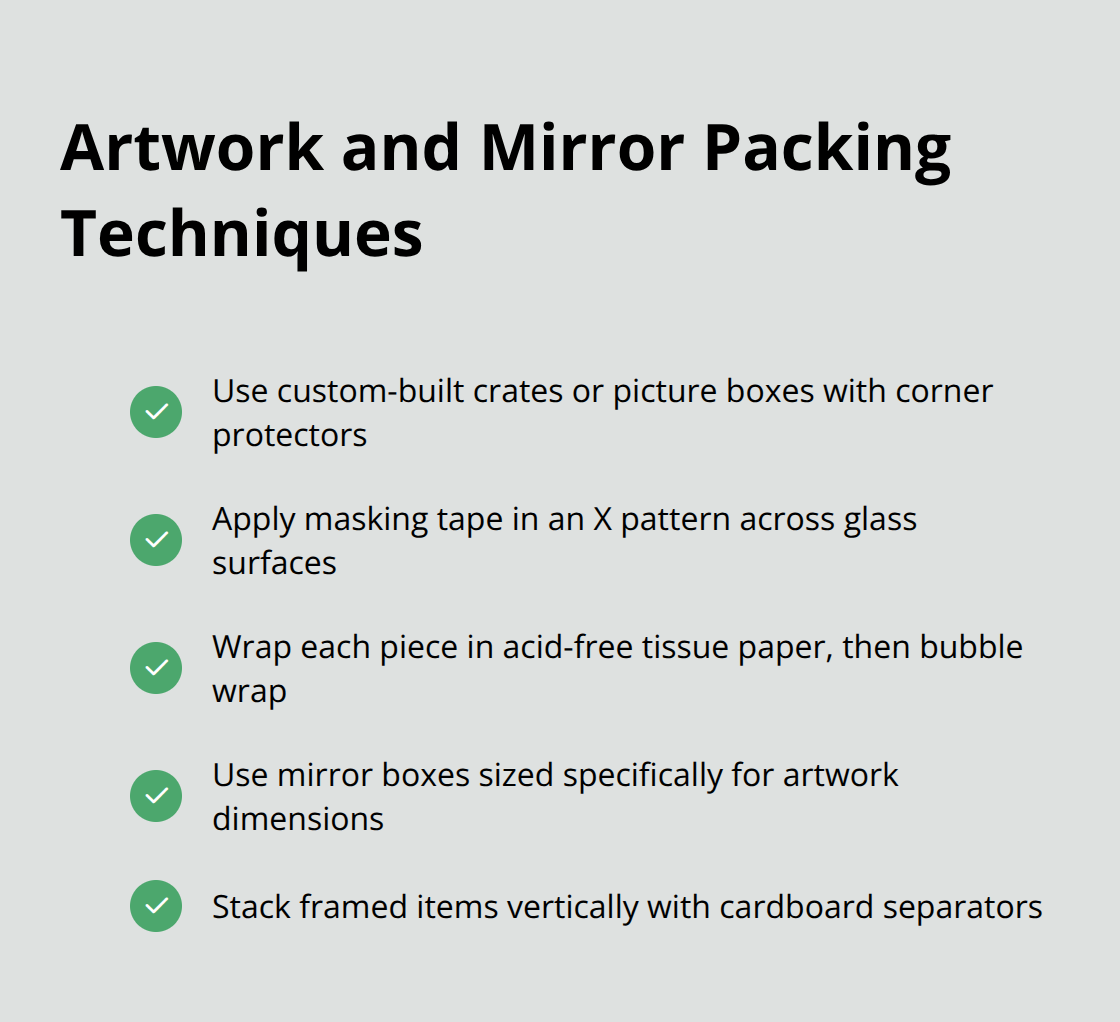Packing an entire household can feel overwhelming without the right approach. Most people underestimate the time and materials needed, leading to last-minute stress and damaged belongings.
We at Southbay Moving Systems have helped thousands of families master how to pack your house for moving efficiently. The key lies in having the right supplies, following proven room-by-room strategies, and knowing special techniques for valuable items.
Essential Packing Supplies and Materials
Professional movers select specific box types that most homeowners overlook, which leads to collapsed containers and damaged items. Small boxes rated for 32 ECT handle books and heavy kitchen items best, while medium boxes work for clothes and linens. Large boxes should only hold lightweight items like pillows and lampshades. Wardrobe boxes with metal bars cost more but save hours of work and prevent wrinkles in dress clothes.

Heavy-Duty Protection Materials
Bubble wrap remains the gold standard for fragile items, but newspaper ink transfers onto dishes and creates mess. White paper costs 40% more than newspaper but prevents stains and provides better cushion. Blankets protect furniture surfaces during transport, while stretch wrap secures drawers and cabinet doors without residue. Professional movers use dish pack boxes with built-in dividers for china and glassware – these specialized containers reduce breakage rates compared to regular boxes.
Smart Organization Systems
Color-coded labels eliminate confusion during unload and unpack phases. Assign one color per room and mark boxes on multiple sides since stacks hide labels. Number each box and maintain a master inventory list with content descriptions. This system helps track missing items and prioritizes unpack order. Pre-printed labels with checkboxes for Fragile, This Side Up, and Heavy Items streamline the process and communicate requirements to anyone who helps with your move.
Quality Tools That Save Time
Professional-grade tape dispensers apply packing tape faster and more securely than handheld rolls. Box cutters with retractable blades (safety first) make quick work of breaking down empty containers. Permanent markers in multiple colors help maintain your organization system throughout the process. The cost of packing materials might seem like small investments, but they significantly speed up both pack and unpack phases.
With the right supplies secured, you can now focus on the most effective room-by-room strategies that professional movers use to maximize efficiency and protect your belongings.
Room-by-Room Packing Strategies
Kitchen and Fragile Items Best Practices
Kitchen items require the most time and specialized techniques because breakage rates spike without proper methods. Pack dishes vertically in dish pack boxes with cardboard dividers, never flat or stacked horizontally. This vertical method reduces breakage compared to traditional stacks according to professional standards. Wrap each plate individually in white paper and create bundles of four to six plates before you place them in slots.
Fill empty spaces with crumpled paper to prevent shifts during transport. Pack glasses and mugs with paper inside each item, then wrap the outside completely. Heavy items like cast iron pans go in small boxes to keep weight under 50 pounds per container. Never mix kitchen items with belongings from other rooms since unpack becomes chaotic and inefficient.

Bedroom and Clothing Organization Methods
Bedroom items focus on fabric protection and space efficiency while you maintain organization systems. Leave clothes on hangers and transfer directly into wardrobe boxes to save hours of work and prevent wrinkles. Roll t-shirts, underwear, and casual clothes tightly to fit more items per box and reduce creases.
Pack shoes in original boxes when possible, or wrap each pair in paper and place toe-to-heel in medium boxes. Mattresses need plastic covers to prevent stains and tears during transport (especially important for long-distance moves).
Living Areas and Electronics Protection
Electronics require original boxes with foam inserts for televisions, computers, and gaming systems. Take photos of cable connections before you disconnect anything to speed up setup in your new home. Pack electronic components in anti-static bubble wrap and fill boxes completely to prevent internal movement that damages delicate circuits.
Label each box with detailed contents and destination room. Use small boxes for heavy items like speakers or gaming consoles (weight distribution matters for safe transport). Store remote controls and cables in labeled bags taped directly to their corresponding devices.
These room-specific strategies form the foundation, but certain valuable items need advanced techniques that go beyond standard methods.
Advanced Packing Techniques for Special Items
Artwork and Mirror Transport Methods
Artwork and mirrors need custom-built crates or picture boxes with corner protectors to prevent frame damage during transport. Apply masking tape in an X pattern across glass surfaces to hold pieces together if cracks occur, but never use duct tape which leaves residue. Wrap each piece in acid-free tissue paper first, then bubble wrap with the smooth side against the glass. Professional art handlers use mirror boxes sized specifically for artwork dimensions rather than force pieces into standard containers. Stack framed items vertically in boxes with cardboard separators between each piece, never lay them flat where weight creates pressure points.

Furniture Disassembly and Protection
Remove all hardware from furniture and place screws, bolts, and small parts in labeled bags taped directly to each furniture piece. Take photos of complex assembly before disassembly to speed up reconstruction. Wrap furniture legs and corners with blankets secured by stretch wrap to prevent scratches and dents. Professional movers disassemble bed frames completely because assembled frames often break during doorway navigation (especially in older homes with narrow passages). Remove glass tops from tables and pack them separately with the same techniques as mirrors.
Plants and Perishables Transport Guidelines
Most professional companies refuse to transport plants due to agricultural regulations and the challenges of moving plants safely. Pack plants you transport yourself in open-top boxes with adequate ventilation holes and secure pots with paper to prevent soil spillage. Water plants lightly two days before the move since wet soil adds weight and creates mess. Perishable foods require coolers with ice packs for moves under four hours, but donate or consume items before longer relocations since refrigerated trucks cost significantly more than standard services.
Final Thoughts
Professional movers complete most residential packs in two to three days because they follow proven systems and use quality materials. Start your pack eight weeks before your move date to avoid last-minute chaos. Begin with seasonal items and rarely used belongings, then progress through each room systematically using the techniques we covered for how to pack your house for moving.
We at Southbay Moving Systems offer professional services that handle complex items like pianos and fragile electronics with specialized equipment. You can save money by decluttering before you pack, using free boxes from liquor stores, and handling non-fragile items yourself while professionals manage delicate belongings. Schedule your move during off-peak times from October through April when rates drop compared to summer months.
Keep important documents, medications, and valuables with you during transport rather than pack them with household goods. Conduct final walkthroughs to verify nothing gets left behind at your old home. Inspect items immediately upon delivery to document any damage for insurance claims (this protects your investment and speeds up resolution).




